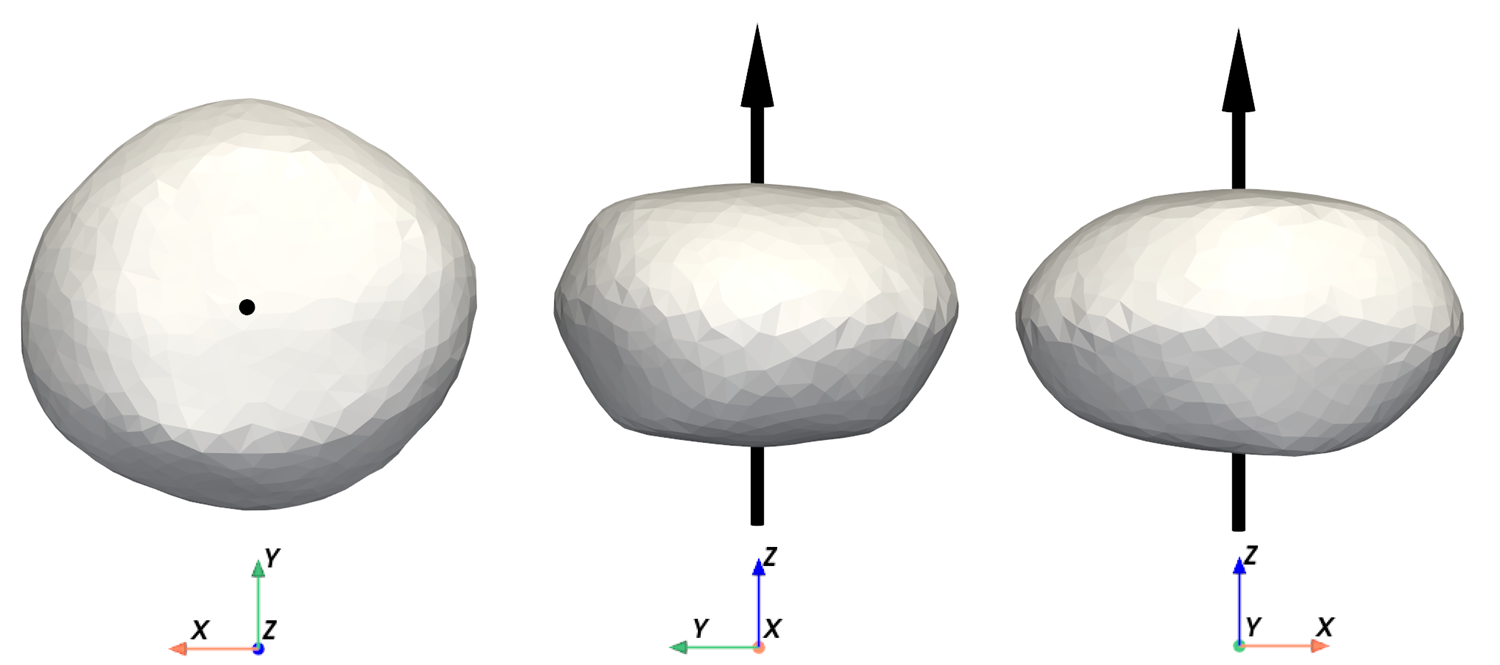- 1Florida Space Institute, University of Central Florida, Orlando, United States of America (marin.ferrais@ucf.edu)
- 2ESA PDO NEO Coordination Centre, Rome, Italy
- 3Astronomical Institute, Academy of Sciences of the Czech Republic, Ondřejov, Czech Republic
- 4Space sciences, Technologies & Astrophysics Research (STAR) Institute University of Liège, Liège, Belgium
(385186) 1994 AW1 is a potentially hazardous asteroid, the first near-Earth asteroid suspected to be a binary [1,2] and was selected as the initial target of the DART and HERA mission. 1994 AW1 made a close approach to Earth in July 2015, getting as close as 25 lunar distances on the 15th. This flyby was a great opportunity for observations in photometry [3] and radar.
Continuous wave (CW) and Delay Doppler imaging modes were used, first at Goldstone for the 14-19 July period (0.066-0.070 au), and then by Arecibo for the 20-30 July 2015 (0.075-0.126 au). A range resolution of 150 m was achieved at Goldstone in bistatic configuration with Green Bank Telescope (8560 MHz), while monostatic observation in S-band (2380 MHz, 12.6 cm) at Arecibo were obtained at resolutions of 30 m and 75 m. The rotation period of the primary (2.52 h) and orbital period of the secondary (22 h) derived from optical light curves [4] were confirmed by these observations. The primary is about 800 m in diameter and the secondary is about half of the primary size. A more recent but relatively distant approach (July 8, 2022; 0.11 au) allowed CW spectra to be obtained at Goldstone [5].
We also obtained new light curves in 13-24 January 2023 while it was at V ~16-17 mag. We used the TRAPPIST-South (I40, Chile) and -North (Z53, Morocco) [6] to gather 10 light curves in total. For 4 of them, brightness drops indicate mutual events between 1994 AW1 and its satellite.
We searched for the sidereal rotation period of 1994 AW1 by combining the TRAPPIST data with data from the Ondřejov Observatory 0.65m telescope and the Danish 1.54m telescope, obtained between 2014 and 2023. We used the lightcurve inversion method of [7] and [8] and derived a convex shape model with sidereal period of 2.518586 ± 0.000011 h, a pole orientation of 187° of ecliptic longitude and +67° of ecliptic latitude, and a b/a axis ratio of 0.97.

Figure: Convex shape model of 1994 AW1 derived from lightcurve inversion and viewed along the rotation (z) axis on the left, the x axis (middle) and the y axis (right). The black arrow indicates the rotation axis.
Finally, we combined our radar and optical datasets with SHAPE [9] to perform shape modeling of the primary component. We will present our preliminary non-convex 3D shape model, pole coordinates and system density.
References:
[1] Pravec, P. and Hahn, G. (1997), Icarus, 127.
[2] Mottola, S. et al. (1995), Icarus 117, 62-70.
[3] Warner D. B. (2016), MPB, 43.
[4] Pravec et al. (2006), Icarus, 181, 63-93.
[5] Brozovic, M. et al. (2022) DPS 54.
[6] Jehin, E. et al. (2011), The Messenger 145, 2–6.
[7] Kaasalainen & Torppa (2001), Icarus, 153, 24.
[8] Kaasalainen, M. et al. (2001), Icarus, 153, 37.
[9] Magri, C. et al. (2007), Icarus 186, 152-177.
How to cite: Ferrais, M., Marshall, S., Venditti, F., Devogèle, M., Pravec, P., Scheirich, P., and Jehin, E.: Shape model of the binary NEA (385186) 1994 AW1 from 2015 radar observations and long term lightcurve dataset. , Europlanet Science Congress 2024, Berlin, Germany, 8–13 Sep 2024, EPSC2024-161, https://doi.org/10.5194/epsc2024-161, 2024.